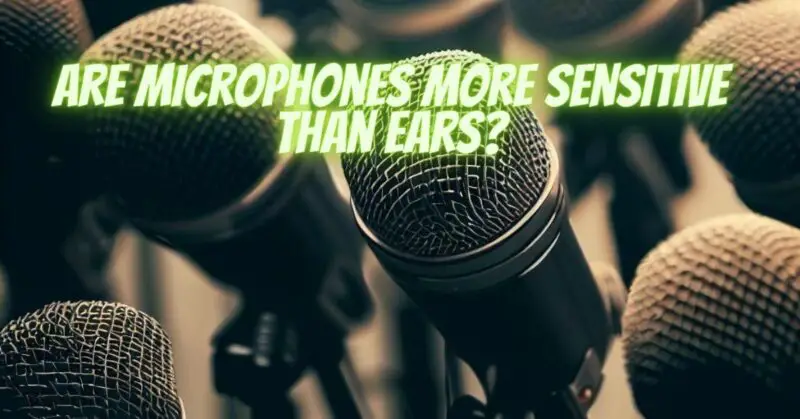Microphones and human ears serve distinct purposes when it comes to perceiving sound. While microphones are designed to capture and amplify sound for various applications, our ears are intricate organs responsible for the remarkable task of hearing and processing sound. In this article, we explore the sensitivity of microphones compared to our ears and highlight the differences between these two mechanisms of sound perception.
- Sensitivity to Sound Pressure:
Microphones are engineered to be highly sensitive to sound pressure levels, allowing them to capture even the faintest of sounds. They can detect a wide range of frequencies and reproduce them accurately. On the other hand, while human ears are remarkably sensitive, they have a limited dynamic range and are more adept at perceiving sounds within a specific range that is optimal for human hearing.
- Frequency Response:
Microphones are designed to have a flat frequency response, meaning they capture sound equally across the audible spectrum. However, human ears have a more complex frequency response that is optimized for human speech and music perception. Our ears are more sensitive to sounds within the range of human speech frequencies and are capable of perceiving nuances and subtle variations in pitch, timbre, and tonality.
- Directional Sensitivity:
Microphones can be engineered with various polar patterns, allowing them to capture sound from specific directions. They can be omnidirectional, capturing sound equally from all directions, or have more focused patterns such as cardioid, bidirectional, or shotgun, depending on the desired application. In contrast, our ears possess a remarkable ability to localize sound sources, allowing us to determine the direction and distance of the sound with remarkable accuracy.
- Dynamic Range:
Microphones have a wide dynamic range, meaning they can capture both quiet and loud sounds without distortion. This makes them useful for recording performances or capturing sound in challenging environments. Human ears also have a broad dynamic range, but they have the added advantage of automatically adjusting their sensitivity to accommodate different sound levels. Our ears can handle loud sounds by reducing their sensitivity, preventing us from experiencing discomfort or damage.
- Signal Processing and Perception:
Microphones capture sound as electrical signals that can be processed and amplified before being reproduced. The captured sound can undergo various forms of signal processing to enhance its quality or remove unwanted noise. Human ears, on the other hand, not only perceive sound but also process it in real-time. Our auditory system employs complex mechanisms to interpret sound signals, analyze their meaning, and extract relevant information such as speech or music.
Conclusion:
Microphones and human ears have distinct characteristics and serve different purposes when it comes to perceiving sound. While microphones are designed to be highly sensitive, capturing a wide range of frequencies and sound pressure levels, our ears possess remarkable abilities in terms of frequency perception, localization, dynamic range, and real-time processing. While microphones play a crucial role in recording and amplifying sound for various applications, our ears provide us with an extraordinary sensory experience, allowing us to appreciate the intricacies and nuances of the soundscape around us.


